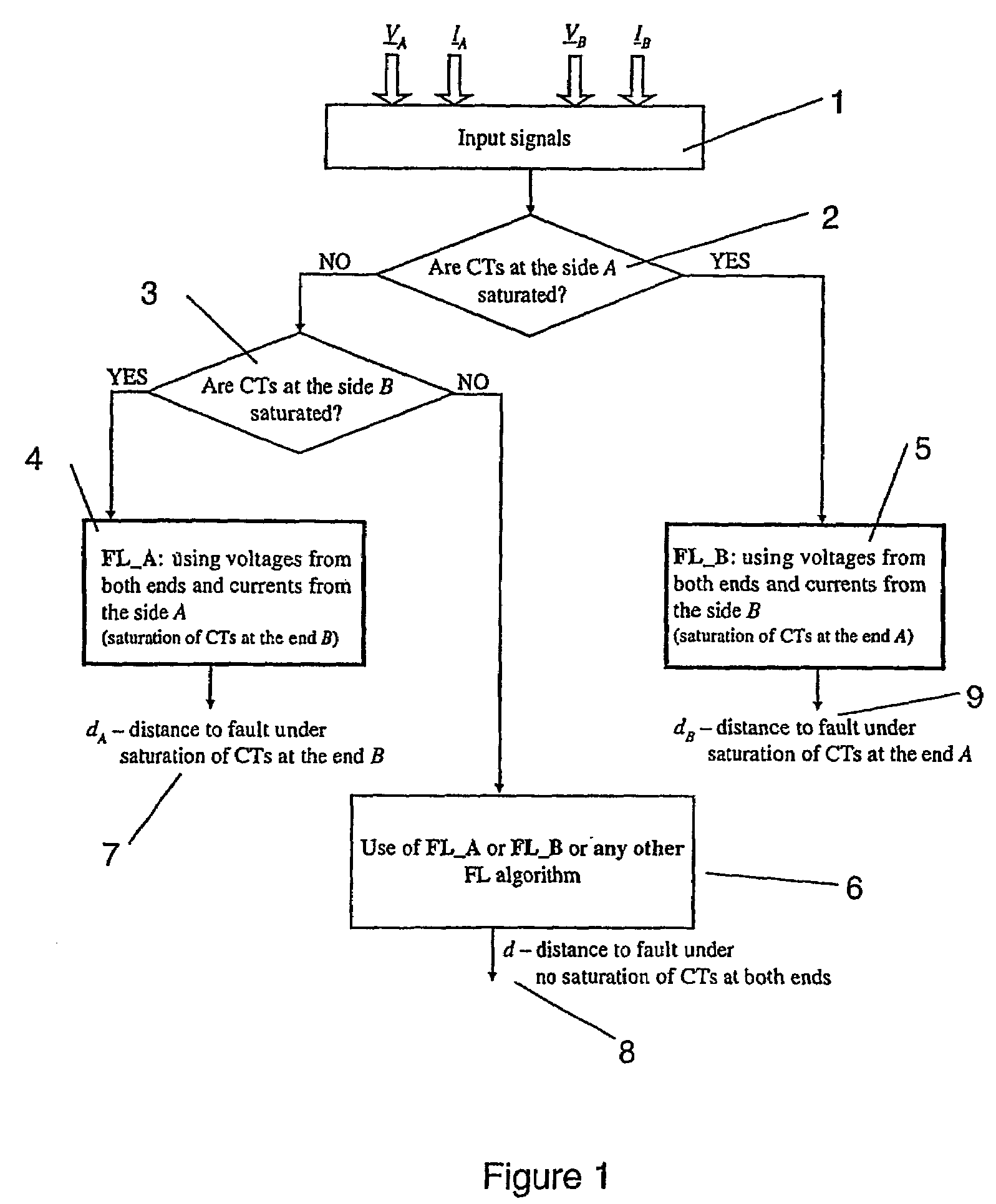Fault location using measurements from two ends of a line
a technology of fault location and measurement, which is applied in the direction of fault location, testing circuit, instruments, etc., can solve the problems of unsatisfactory achieved fault location accuracy, the inability to accurately measure the fault location accuracy of two ends, and the inability to accurately measure the fault location accuracy of one end and two ends. , to achieve the effect of avoiding the adverse influence of ct saturation on fault location accuracy
- Summary
- Abstract
- Description
- Claims
- Application Information
AI Technical Summary
Benefits of technology
Problems solved by technology
Method used
Image
Examples
Embodiment Construction
[0033]FIG. 1 shows a method in the form of a flow chart according to an embodiment of the invention. The flow chart shows means 1 for receiving input signals, a decision step 2 to determine if a CT is at one end A is saturated, and a second decision step 3 to determine whether a CT at B is or is not saturated (when step 2=Yes). A result stage 4 is shown for when Fault Location FL_A shall be used, result stage 5 when Fault Location FL_B shall be used, and result stage 6 when any Fault location algorithm including FL_A or FL_B may be used.
[0034]A determination of whether a CT is saturated or not may be carried out using a method disclosed in EP 506 035 B1 entitled Method and device for detecting saturation in current transformers, or by any other known method. The method disclosed in EP 506 035 B1 is dependent on continuously determining an absolute value of both the current and of a derivative of the current. Three criteria calculated from the measured and derived values are disclose...
PUM
 Login to View More
Login to View More Abstract
Description
Claims
Application Information
 Login to View More
Login to View More - R&D
- Intellectual Property
- Life Sciences
- Materials
- Tech Scout
- Unparalleled Data Quality
- Higher Quality Content
- 60% Fewer Hallucinations
Browse by: Latest US Patents, China's latest patents, Technical Efficacy Thesaurus, Application Domain, Technology Topic, Popular Technical Reports.
© 2025 PatSnap. All rights reserved.Legal|Privacy policy|Modern Slavery Act Transparency Statement|Sitemap|About US| Contact US: help@patsnap.com



